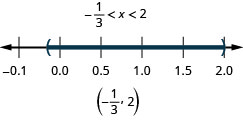2.8E: Ejercicios
- Page ID
- 112740
\( \newcommand{\vecs}[1]{\overset { \scriptstyle \rightharpoonup} {\mathbf{#1}} } \)
\( \newcommand{\vecd}[1]{\overset{-\!-\!\rightharpoonup}{\vphantom{a}\smash {#1}}} \)
\( \newcommand{\id}{\mathrm{id}}\) \( \newcommand{\Span}{\mathrm{span}}\)
( \newcommand{\kernel}{\mathrm{null}\,}\) \( \newcommand{\range}{\mathrm{range}\,}\)
\( \newcommand{\RealPart}{\mathrm{Re}}\) \( \newcommand{\ImaginaryPart}{\mathrm{Im}}\)
\( \newcommand{\Argument}{\mathrm{Arg}}\) \( \newcommand{\norm}[1]{\| #1 \|}\)
\( \newcommand{\inner}[2]{\langle #1, #2 \rangle}\)
\( \newcommand{\Span}{\mathrm{span}}\)
\( \newcommand{\id}{\mathrm{id}}\)
\( \newcommand{\Span}{\mathrm{span}}\)
\( \newcommand{\kernel}{\mathrm{null}\,}\)
\( \newcommand{\range}{\mathrm{range}\,}\)
\( \newcommand{\RealPart}{\mathrm{Re}}\)
\( \newcommand{\ImaginaryPart}{\mathrm{Im}}\)
\( \newcommand{\Argument}{\mathrm{Arg}}\)
\( \newcommand{\norm}[1]{\| #1 \|}\)
\( \newcommand{\inner}[2]{\langle #1, #2 \rangle}\)
\( \newcommand{\Span}{\mathrm{span}}\) \( \newcommand{\AA}{\unicode[.8,0]{x212B}}\)
\( \newcommand{\vectorA}[1]{\vec{#1}} % arrow\)
\( \newcommand{\vectorAt}[1]{\vec{\text{#1}}} % arrow\)
\( \newcommand{\vectorB}[1]{\overset { \scriptstyle \rightharpoonup} {\mathbf{#1}} } \)
\( \newcommand{\vectorC}[1]{\textbf{#1}} \)
\( \newcommand{\vectorD}[1]{\overrightarrow{#1}} \)
\( \newcommand{\vectorDt}[1]{\overrightarrow{\text{#1}}} \)
\( \newcommand{\vectE}[1]{\overset{-\!-\!\rightharpoonup}{\vphantom{a}\smash{\mathbf {#1}}}} \)
\( \newcommand{\vecs}[1]{\overset { \scriptstyle \rightharpoonup} {\mathbf{#1}} } \)
\( \newcommand{\vecd}[1]{\overset{-\!-\!\rightharpoonup}{\vphantom{a}\smash {#1}}} \)
\(\newcommand{\avec}{\mathbf a}\) \(\newcommand{\bvec}{\mathbf b}\) \(\newcommand{\cvec}{\mathbf c}\) \(\newcommand{\dvec}{\mathbf d}\) \(\newcommand{\dtil}{\widetilde{\mathbf d}}\) \(\newcommand{\evec}{\mathbf e}\) \(\newcommand{\fvec}{\mathbf f}\) \(\newcommand{\nvec}{\mathbf n}\) \(\newcommand{\pvec}{\mathbf p}\) \(\newcommand{\qvec}{\mathbf q}\) \(\newcommand{\svec}{\mathbf s}\) \(\newcommand{\tvec}{\mathbf t}\) \(\newcommand{\uvec}{\mathbf u}\) \(\newcommand{\vvec}{\mathbf v}\) \(\newcommand{\wvec}{\mathbf w}\) \(\newcommand{\xvec}{\mathbf x}\) \(\newcommand{\yvec}{\mathbf y}\) \(\newcommand{\zvec}{\mathbf z}\) \(\newcommand{\rvec}{\mathbf r}\) \(\newcommand{\mvec}{\mathbf m}\) \(\newcommand{\zerovec}{\mathbf 0}\) \(\newcommand{\onevec}{\mathbf 1}\) \(\newcommand{\real}{\mathbb R}\) \(\newcommand{\twovec}[2]{\left[\begin{array}{r}#1 \\ #2 \end{array}\right]}\) \(\newcommand{\ctwovec}[2]{\left[\begin{array}{c}#1 \\ #2 \end{array}\right]}\) \(\newcommand{\threevec}[3]{\left[\begin{array}{r}#1 \\ #2 \\ #3 \end{array}\right]}\) \(\newcommand{\cthreevec}[3]{\left[\begin{array}{c}#1 \\ #2 \\ #3 \end{array}\right]}\) \(\newcommand{\fourvec}[4]{\left[\begin{array}{r}#1 \\ #2 \\ #3 \\ #4 \end{array}\right]}\) \(\newcommand{\cfourvec}[4]{\left[\begin{array}{c}#1 \\ #2 \\ #3 \\ #4 \end{array}\right]}\) \(\newcommand{\fivevec}[5]{\left[\begin{array}{r}#1 \\ #2 \\ #3 \\ #4 \\ #5 \\ \end{array}\right]}\) \(\newcommand{\cfivevec}[5]{\left[\begin{array}{c}#1 \\ #2 \\ #3 \\ #4 \\ #5 \\ \end{array}\right]}\) \(\newcommand{\mattwo}[4]{\left[\begin{array}{rr}#1 \amp #2 \\ #3 \amp #4 \\ \end{array}\right]}\) \(\newcommand{\laspan}[1]{\text{Span}\{#1\}}\) \(\newcommand{\bcal}{\cal B}\) \(\newcommand{\ccal}{\cal C}\) \(\newcommand{\scal}{\cal S}\) \(\newcommand{\wcal}{\cal W}\) \(\newcommand{\ecal}{\cal E}\) \(\newcommand{\coords}[2]{\left\{#1\right\}_{#2}}\) \(\newcommand{\gray}[1]{\color{gray}{#1}}\) \(\newcommand{\lgray}[1]{\color{lightgray}{#1}}\) \(\newcommand{\rank}{\operatorname{rank}}\) \(\newcommand{\row}{\text{Row}}\) \(\newcommand{\col}{\text{Col}}\) \(\renewcommand{\row}{\text{Row}}\) \(\newcommand{\nul}{\text{Nul}}\) \(\newcommand{\var}{\text{Var}}\) \(\newcommand{\corr}{\text{corr}}\) \(\newcommand{\len}[1]{\left|#1\right|}\) \(\newcommand{\bbar}{\overline{\bvec}}\) \(\newcommand{\bhat}{\widehat{\bvec}}\) \(\newcommand{\bperp}{\bvec^\perp}\) \(\newcommand{\xhat}{\widehat{\xvec}}\) \(\newcommand{\vhat}{\widehat{\vvec}}\) \(\newcommand{\uhat}{\widehat{\uvec}}\) \(\newcommand{\what}{\widehat{\wvec}}\) \(\newcommand{\Sighat}{\widehat{\Sigma}}\) \(\newcommand{\lt}{<}\) \(\newcommand{\gt}{>}\) \(\newcommand{\amp}{&}\) \(\definecolor{fillinmathshade}{gray}{0.9}\)La práctica hace la perfección
Resolver ecuaciones de valor absoluto
En los siguientes ejercicios, resuelve.
1. a.\(|x|=6\) b.\(|y|=−3\) c.\(|z|=0\)
2. a.\( |x|=4\) b.\(|y|=−5\) c.\(|z|=0\)
- Contestar
-
a.\(x=4,x=−4\) b. sin solución c.\(z=0\)
3. a.\(|x|=7\) b.\(|y|=−11\) c.\(|z|=0\)
4. a.\(|x|=3\) b.\(|y|=−1\) c.\(|z|=0\)
- Contestar
-
a.\(x=3,x=−3\) b. sin solución c.\(z=0\)
5. \(|2x−3|−4=1\)
6. \(|4x−1|−3=0\)
- Contestar
-
\(x=1, \,x=−\frac{1}{2}\)
7. \(|3x−4|+5=7\)
8. \(|4x+7|+2=5\)
- Contestar
-
\(x=−1, \,x=−\frac{5}{2}\)
9. \(4|x−1|+2=10\)
10. \(3|x−4|+2=11\)
- Contestar
-
\(x=7, \,x=1\)
11. \(3|4x−5|−4=11\)
12. \(3|x+2|−5=4\)
- Contestar
-
\(x=1, \,x=−5\)
13. \(−2|x−3|+8=−4\)
14. \(−3|x−4|+4=−5\)
- Contestar
-
\(x=7, \,x=1\)
15. \(|34x−3|+7=2\)
16. \(|35x−2|+5=2\)
- Contestar
-
no hay solución
17. \(|12x+5|+4=1\)
18. \(|14x+3|+3=1\)
- Contestar
-
no hay solución
19. \(|3x−2|=|2x−3|\)
20. \(|4x+3|=|2x+1|\)
- Contestar
-
\(x=−1, \,x=−\frac{2}{3}\)
21. \(|6x−5|=|2x+3|\)
22. \(|6−x|=|3−2x|\)
- Contestar
-
\(x=−3, \,x=3\)
Resolver desigualdades de valor absoluto con “menos que”
En los siguientes ejercicios, resolver cada desigualdad. Grafica la solución y escribe la solución en notación de intervalos.
23. \(|x|<5\)
24. \(|x|<1\)
- Contestar
-

25. \(|x|\leq 8\)
26. \(|x|\leq 3\)
- Contestar
-

27. \(|3x−3|\leq 6\)
28. \(|2x−5|\leq 3\)
- Contestar
-

29. \(|2x+3|+5<4\)
30. \(|3x−7|+3<1\)
- Contestar
-

31. \(|4x−3|<1\)
32. \(|6x−5|<7\)
- Contestar
-

33. \(|x−4|\leq −1\)
34. \(|5x+1|\leq −2\)
- Contestar
-

Resolver desigualdades de valor absoluto con “mayor que”
En los siguientes ejercicios, resolver cada desigualdad. Grafica la solución y escribe la solución en notación de intervalos.
35. \(|x|>3\)
36. \(|x|>6\)
- Contestar
-

37. \(|x|\geq 2\)
38. \(|x|\geq 5\)
- Contestar
-

39. \(|3x−8|>−1\)
40. \(|x−5|>−2\)
- Contestar
-

41. \(|3x−2|>4\)
42. \(|2x−1|>5\)
- Contestar
-

43. \(|x+3|\geq 5\)
44. \(|x−7|\geq 1\)
- Contestar
-

45. \(3|x|+4\geq 1\)
46. \(5|x|+6\geq 1\)
- Contestar
-

En los siguientes ejercicios, resuelve. Para cada desigualdad, también grafica la solución y escribe la solución en notación de intervalos.
47. \(2|x+6|+4=8\)
48. \(|3x−4|\geq 2\)
- Contestar
-
\(x=4,x=27\)
49. \(|6x−5|=|2x+3|\)
50. \(|4x−3|<5\)
- Contestar
-
\(x=3,x=2\)
51. \(|2x−5|+2=3\)
52. \(|3x+1|−3=7\)
- Contestar
-
\(x=3,x=−\frac{11}{3}\)
53. \(|7x+2|+8<4\)
54. \(5|2x−1|−3=7\)
- Contestar
-
\(x=\frac{3}{2},x=−\frac{1}{2}\)
55. \(|x−7|>−3\)
56. \(|8−x|=|4−3x|\)
- Contestar
-

Resolver aplicaciones con valor absoluto
En los siguientes ejercicios, resuelve.
57. Una granja de pollos idealmente produce 200,000 huevos por día. Pero este total puede variar hasta en 25 mil huevos. ¿Cuál es la producción máxima y mínima esperada en la finca?
58. Un embotellador de jugo orgánico produce idealmente 215,000 botellas por día. Pero este total puede variar hasta en 7,500 botellas. ¿Cuál es la producción máxima y mínima esperada en la empresa embotelladora?
- Contestar
-
La producción mínima a máxima esperada es de 207,500 a 2,225,000 botellas
59. Para asegurar el cumplimiento de la ley, Miguel rutinariamente rebasa en 0.5 gramos el peso de sus tortillas. Acaba de recibir un reporte que le decía que podría estar perdiendo hasta 100.000 dólares al año usando esta práctica. Ahora planea comprar equipo nuevo que garantice el grosor de la tortilla dentro de 0.005 pulgadas. Si el grosor ideal de la tortilla es de 0.04 pulgadas, ¿qué grosor de las tortillas se garantizará?
60. En Lilly Bakery, el peso ideal de una barra de pan es de 24 onzas. Por ley, el peso real puede variar del ideal en 1.5 onzas. ¿Qué rango de peso será aceptable para el inspector sin causar que la panadería sea multada?
- Contestar
-
El peso aceptable es de 22.5 a 25.5 onzas.
Ejercicios de escritura
61. Escribir una descripción gráfica del valor absoluto de un número
62. En sus propias palabras, explique cómo resolver la desigualdad de valor absoluto,\(|3x−2|\geq 4\).
- Contestar
-
Las respuestas variarán.
Autocomprobación
a. después de completar los ejercicios, utilice esta lista de verificación para evaluar su dominio de los objetivos de esta sección.

b. ¿Qué te dice esta lista de verificación sobre tu dominio de esta sección? ¿Qué pasos tomarás para mejorar?


